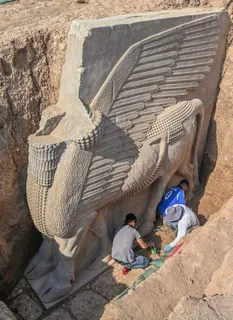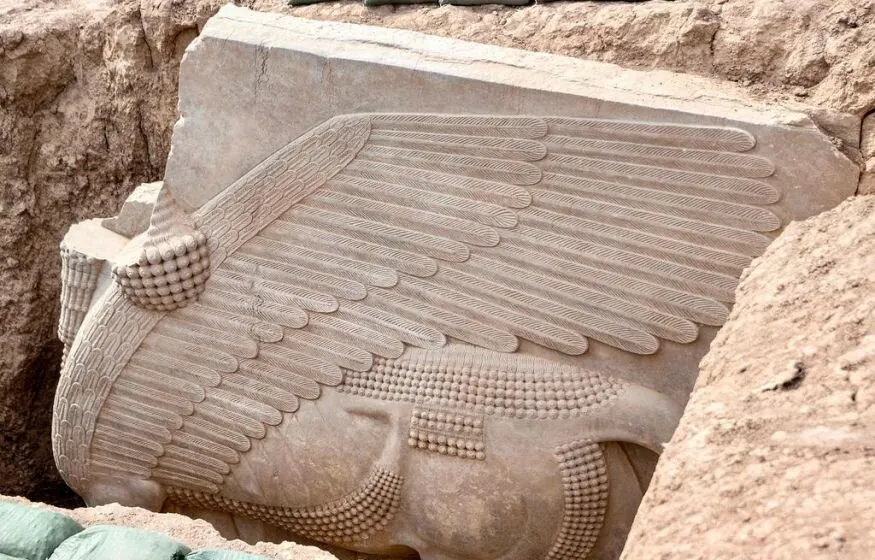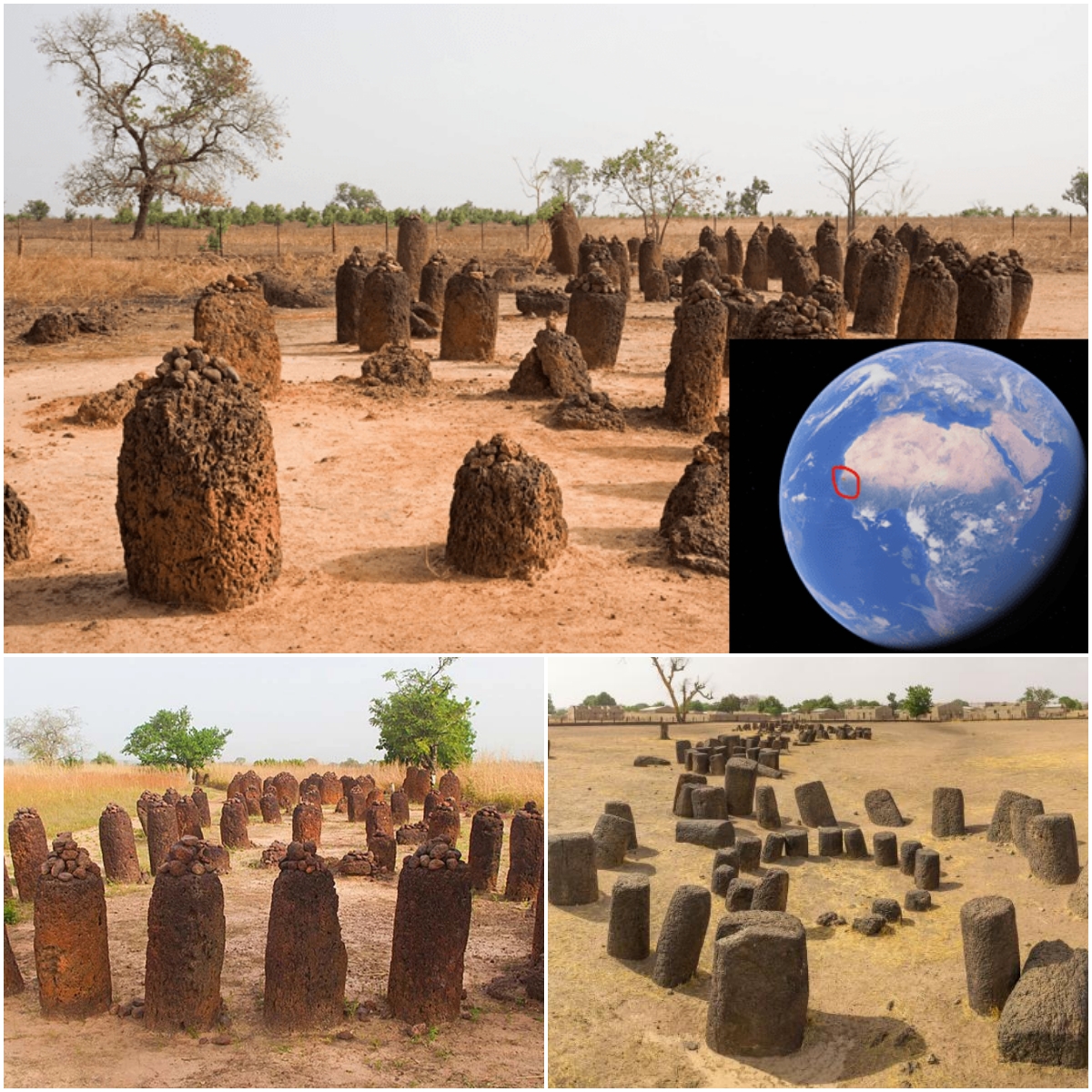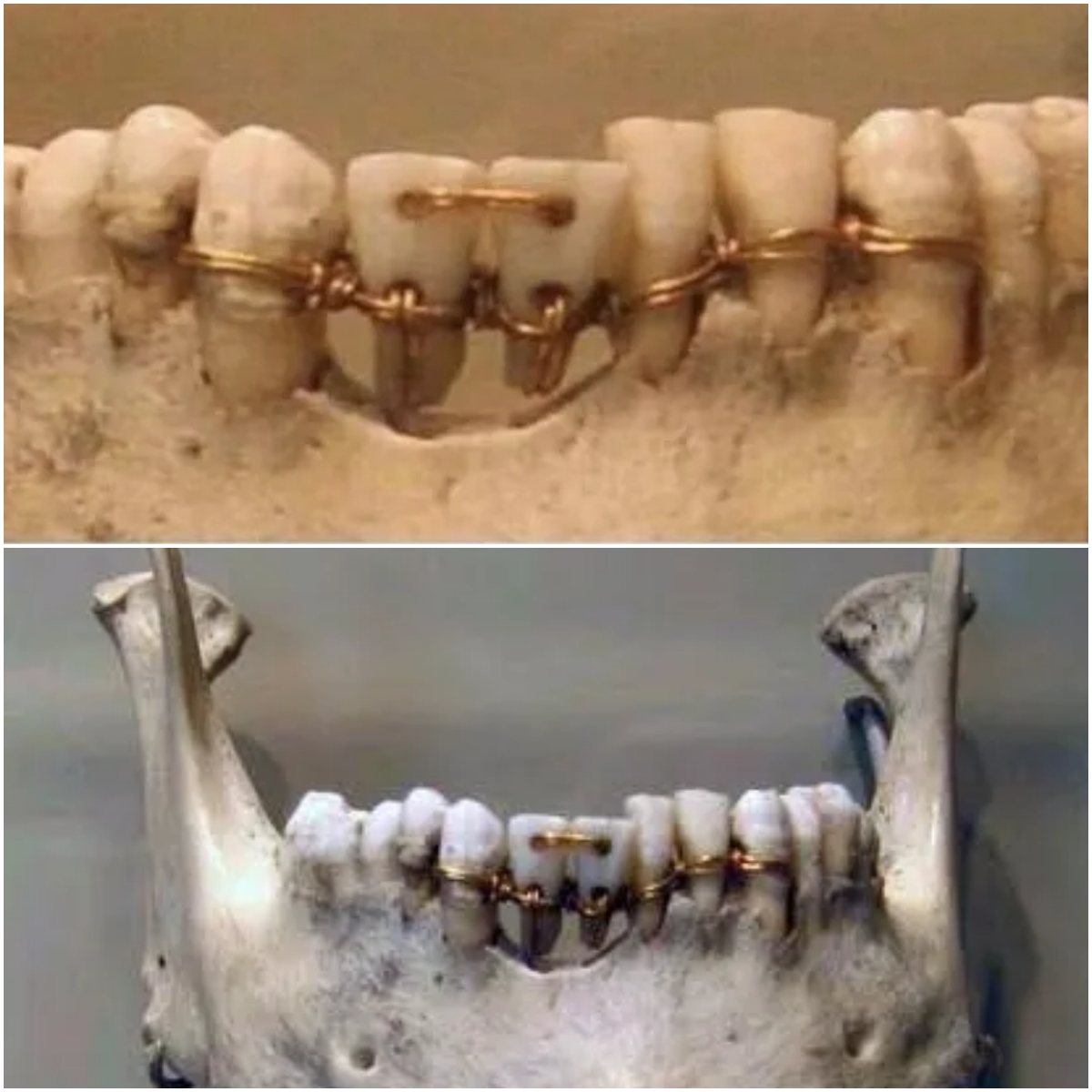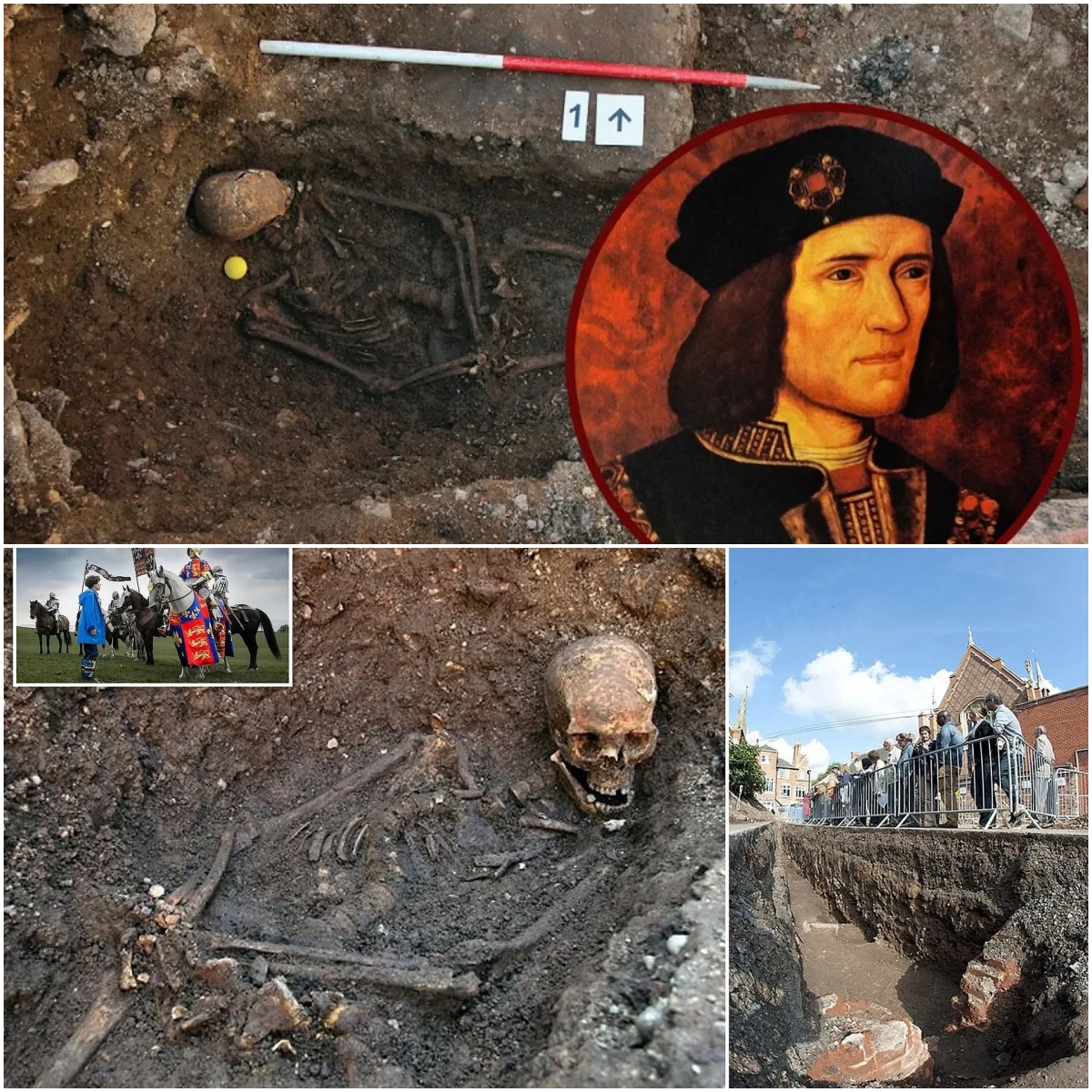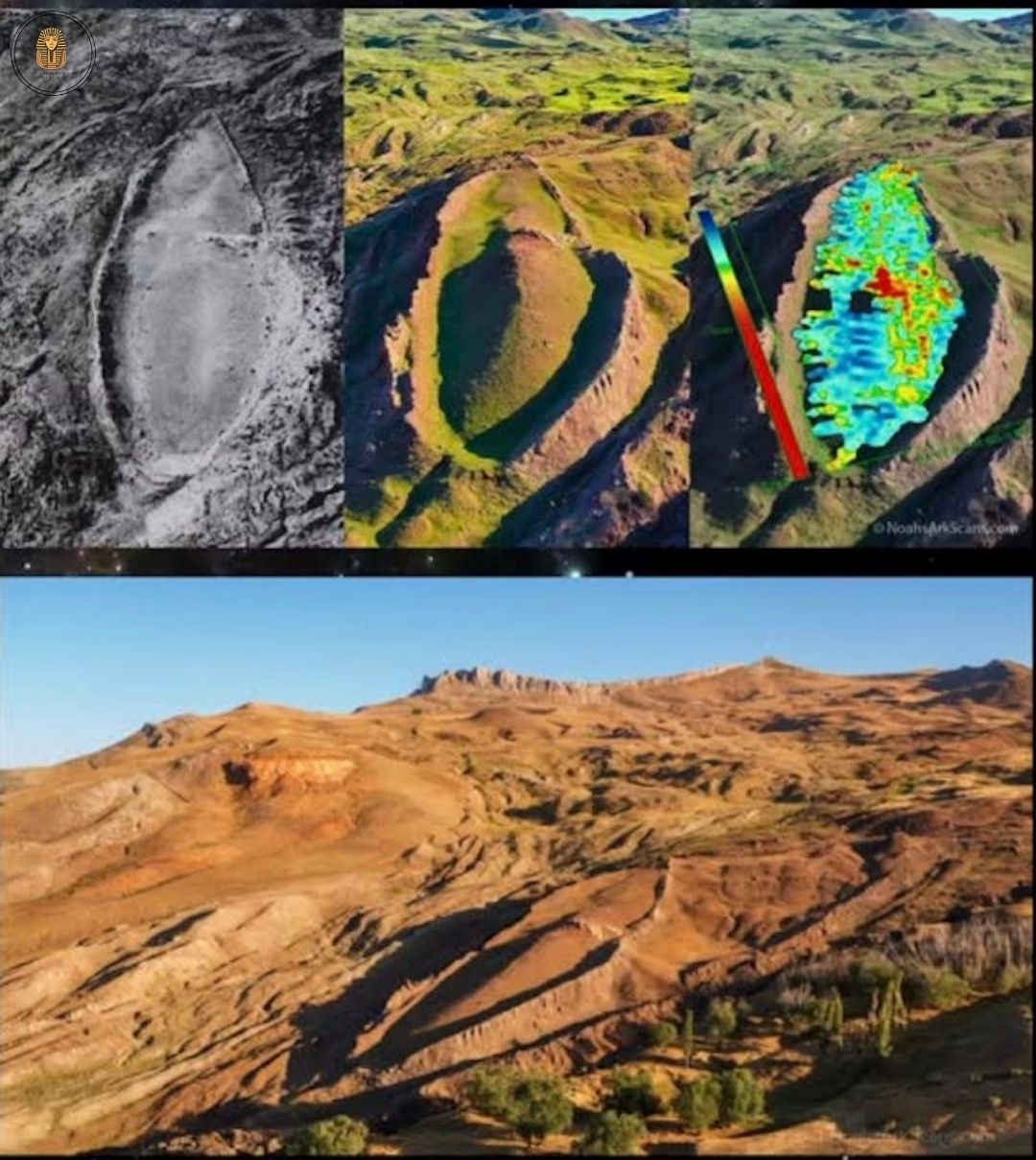Stunning Discovery at the Ancient City of Dur-Sharrukin: 18-Ton Lamassu Statue from the Reign of Sargon II Unearthed
Stunning Discovery at the Ancient City of Dur-Sharrukin: 18-Ton Lamassu Statue from the Reign of Sargon II Unearthed
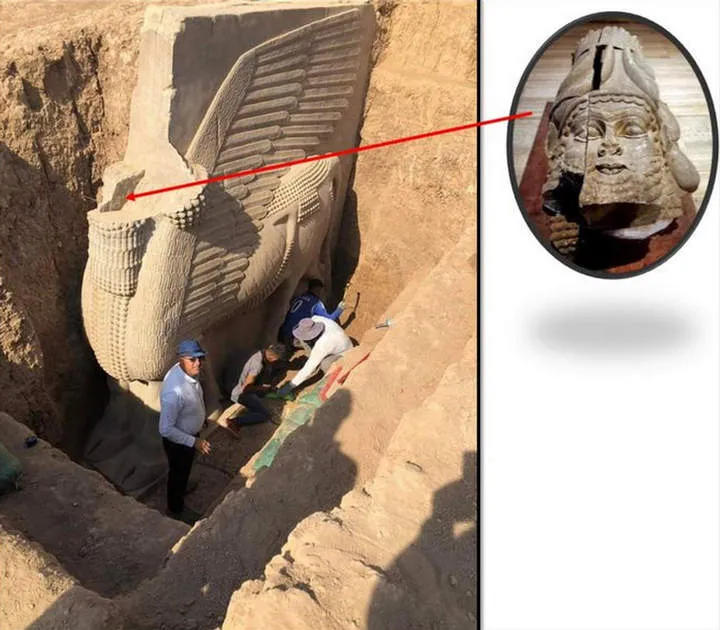
At the ancient city of Dur-Sharrukin, located in present-day northern Iraq, archaeologists have uncovered a truly remarkable find: an 18-ton limestone sculpture of a mythical creature known as a lamassu—a hybrid being with the head of a human, the body of a bull, and the wings of an eagle. The statue has been dated to the reign of Assyrian King Sargon II, who ruled from 721 to 705 B.C.
Dur-Sharrukin, meaning “Fortress of Sargon,” was constructed as the new capital of King Sargon II, one of the most powerful rulers of the Assyrian Empire. The city was meticulously planned, complete with a royal palace, temples, residential districts, and massive defensive walls. However, it was abandoned shortly after the king’s death, turning Dur-Sharrukin into a “ghost city” lost to time for thousands of years.
The newly uncovered statue depicts a lamassu—a protective deity in Assyrian mythology. Lamassu figures were traditionally placed at the entrances of palaces and city gates to ward off evil and safeguard the king and his subjects. With a human head symbolizing intelligence, a bull’s body representing strength, and eagle wings denoting divine presence and speed, lamassu served as spiritual guardians of the empire.
This particular statue is enormous—standing nearly 4 meters tall and over 4.5 meters long—and carved in exquisite detail from a single block of limestone. Despite being buried beneath the earth for millennia, its features remain incredibly well-preserved: the iconic curled beard, majestic eyes, and intricately carved wings and musculature all speak to the high level of craftsmanship of ancient Assyrian sculptors.
This discovery represents not only a major archaeological achievement but also offers a wealth of information about Assyrian religion, art, and politics. The statue likely once stood at the main gate of the royal palace, serving as both a symbol of Sargon II’s power and a spiritual sentinel to protect the empire from harm.
Beyond its artistic value, the find also sheds light on ancient engineering techniques, highlighting how the Assyrians were able to transport and erect such massive stone figures using rudimentary tools and brilliant architectural planning.
Archaeologists are now working closely with international conservation experts to protect and preserve the statue from environmental damage and erosion. There are also plans to eventually reconstruct its original placement within the ruins of the royal palace to allow for public display and further academic study.

